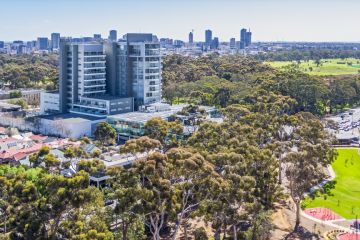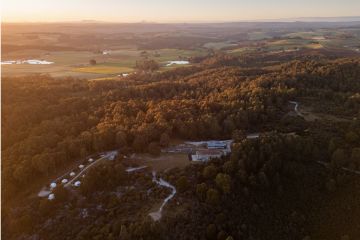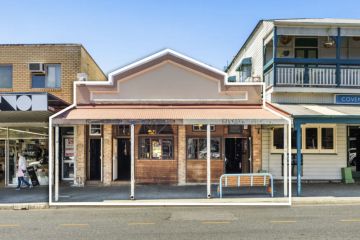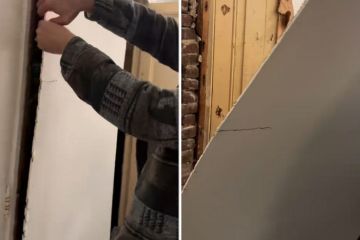Couple wins Heritage Council of Victoria traditional trades award for South Gippsland project
Indisputably there could be no more deserving winners of the Heritage Council of Victoria’s inaugural Traditional Trades award last year than the couple who, in faithfully restoring a Gippsland ruin, went to the trouble of forging the brackets that hold the rainwater gutters in place.
Amateur enthusiasts Marcus Blyth and partner Joanne McFadyen also hand forged the picture holders that secure art to the acres of lath and plaster walling that also had to be remade at Woodcot Park, an 1840s “gentleman’s residence” at Tarraville, South Gippsland.
The couple, who during the week live at Kinglake in a Federation weatherboard they relocated from Horsham in order to save it, have set a perilously high benchmark for entrants in the second Traditional Trades award that is again being sponsored by the Victorian-based, family-owned paint company, Haymes.
Open to both untrained householders and members of the fast-depleting ranks of old school artisan tradies — stonemasons, specialist painters and decorators, bricklayers, soft furniture makers, stucco experts, and carpenters and plumbers of traditionally-profiled fittings and fixtures — the aim of the award is to emphasise the importance of such endangered proficiencies.
“With a lot of these skills in danger of being lost,” says Haymes commercial manager, Craig Salen, “we saw it as important to get involved in representing the heritage and cultural significance of old trades.”
Worth about $3000 cash plus a $1000 Haymes gift voucher, the Traditional Trades award McFadyen and Blyth won in 2016 put a dent in the cost of their epic restoration of one of Gippsland’s oldest buildings.
- Related: Dated rental to stunning beach home
- Related: Worst renos in heritage properties
- Related: Top five things to consider pre-renovation
As grand as five bedroom Woodcot Park is, and as demanding as it was to rescue a building with cows inside and trees big enough to require chainsawing pushing through its floors, McFadyen estimates that in monetary terms “it cost us $30,000, with wallpaper being the biggest part of that budget. The wallpaper cost $15,000.”
The more significant investment was time that Blyth says translated to “a 24/7 job that took three years. We were pretty focused. We went at it pretty hard”.
If to any ordinary renovator that seems a relatively short time, and if the couple make the idea that they had to remediate every aspect of the house, from the crumbling foundations to the collapsed roof, sound like a happy hobby, it underplays what actually went into salvaging a building in the same way that would have been done 170 years ago – except for one hidden element.
Where they could reuse original materials they did. Where they needed new, they milled the timber from their Kinglake holding. They handmade all the guttering and rainheads and remade the missing bay windows and casements, which require Blyth to learn how to cut vintage plate glass.
They matched and hung all the wallpapers and even sourced handmade nails from America to ensure the carpentry and joinery was authentic.
The biggest job, and the one for which Blyth was taught for only three days by Tasmanian Michael Power — one of the few people in Australia who can still do the hard graft of hard plastering — was restoring the lath and plaster walls in rooms with 4.5 metre high (15 foot) ceilings.
For just one room in which the wooden laths were missing, he estimates he reinstalled three kilometres of laths. And, the big confession, for that he did use a nail gun.
The plastering task was a laborious, “massive” task. But like much of what they taught themselves to do, it was not that costly in money terms. “It needed sand and lime and animal hair (cow hair)”, says Blyth. “And a load of sand is not expensive.”
A hot rod restorer in his day job, Blyth has a personal agenda to teach himself a new/old trade every year. So fixing Woodcot Park allowed him the great satisfaction “of working out how they did it all back then”.
Would the couple encourage others to tackle period restoration the old school way and enter the second Traditional Trades award?
“Oh yeah. Because it becomes such a personal achievement”, says Blyth. “And you’ve got to have goals in life?”
Nominations for the next award should be sent to heritage.council@delwp.vic.gov.au outlining the works completed and traditional trades utilised and include before and after images.
We recommend
We thought you might like
States
Capital Cities
Capital Cities - Rentals
Popular Areas
Allhomes
More
- © 2025, CoStar Group Inc.







